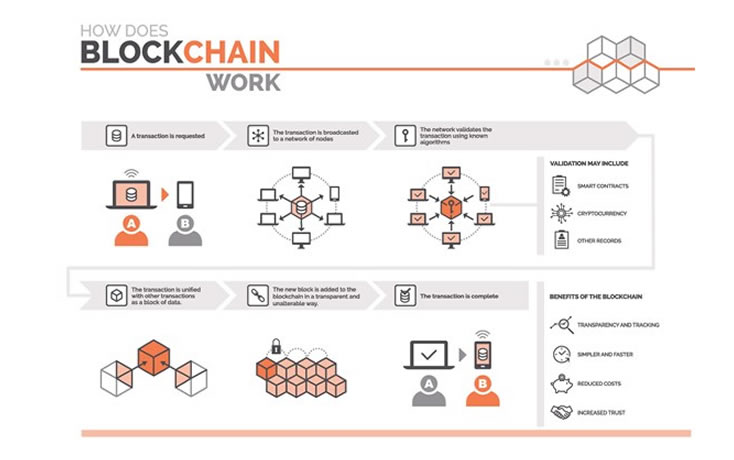In an era marked by unprecedented digital transformation, the integrity of data has become a matter of paramount importance. Imagine a world where every transaction is transparent and immutable—how can blockchain technology serve as the guardian of data integrity? This inquiry propels us into a comprehensive exploration of blockchain’s architecture, revealing its potential to ensure veracity while simultaneously presenting challenges that must be navigated.
At the heart of blockchain technology lies a decentralized ledger system that is distributed across a network of computers, often referred to as nodes. Each node contains an identical copy of the entire ledger, ensuring that no single entity possesses absolute control. The implications of this architecture are profound: modifications to one ledger are immediately reflected across all nodes, creating an environment where data, once recorded, cannot be easily altered or erased.
When a transaction is initiated, it is grouped with others into a block. This block undergoes a cryptographic hashing process, generating a unique digital fingerprint. Each block is then linked to its predecessor, forming a chronological chain. This sequence is critical because it enforces a chronological order that underpins the authenticity of the data. The integrity of transactions, therefore, is guaranteed by cryptography and the consensus among nodes that validate each transaction. The inherent transparency allows all parties to independently verify the authenticity of the data, instilling a sense of trust that is elusive in centralized systems.
However, the resilience of blockchain against tampering comes with its own set of challenges. One prominent issue revolves around the energy consumption required for maintaining such networks, especially those using proof-of-work mechanisms. The computational power necessary to validate transactions can be staggering, leading to detrimental environmental impacts. This raises a playful conundrum: how do we balance the virtues of data integrity with sustainable practices in an age that increasingly prioritizes ecological consciousness?
Furthermore, while blockchain’s decentralized nature fosters security, it also presents vulnerabilities. Smart contracts, self-executing contracts with the terms directly written into code, have the potential to be exploited if the code contains bugs or flaws. These vulnerabilities can compromise the integrity of data if not adequately addressed. This brings us to another pressing question—how can we ensure that the code governing these contracts is resilient against malicious attacks without stifling innovation?
The consensus mechanisms employed to validate transactions also raise pertinent concerns. Various models, such as proof-of-work, proof-of-stake, and delegated proof-of-stake, offer different avenues of validation, each with its implications for decentralization and security. Proof-of-work, for instance, while robust, can lead to centralization if mining power consolidates in the hands of a few entities. Conversely, proof-of-stake tends to favor those who already possess considerable assets, potentially undermining the equitable ethos that blockchain strives to embody. This duality prompts a sophisticated inquiry into the efficacy of these consensus protocols in maintaining data integrity.
As we delve deeper, the question of scalability looms large. Many blockchain networks grapple with the scalability trilemma: the challenge of simultaneously achieving decentralization, security, and scalability. Bitcoin and Ethereum, for instance, have faced significant delays and high transaction fees during periods of heightened demand, undermining the practical use of blockchain for everyday transactions. The dilemma provokes a critical examination of whether the quest for integrity can coexist with the need for rapid transaction processing.
Moreover, interoperability between different blockchains presents an additional layer of complexity. As various organizations deploy their blockchain solutions, the ability to communicate and share data across diverse platforms emerges as a pivotal component of data integrity. Achieving a seamless exchange of information without compromising security is paramount. The development of cross-chain protocols stands as a potential solution, yet it remains an area rife with technical challenges and security vulnerabilities.
In addition to technological hurdles, the legal and regulatory frameworks surrounding blockchain continue to evolve. Governments worldwide grapple with how to regulate such decentralized systems while preserving innovation. The ambiguity in legality often leads to uncertainty regarding data ownership, privacy concerns, and compliance with existing regulations. This development raises another critical question: can society adapt its legal structures to encompass the unique attributes of blockchain technology without stifling its transformative potential?
Despite these challenges, the potential of blockchain to instill trust and ensure data integrity is undeniably significant. For industries plagued by fraud and misinformation—such as finance, supply chain management, and healthcare—the immutability of blockchain records can offer a lifeline. By fostering transparency and accountability, blockchain technology can enhance the reliability of data, contributing to a more equitable and trustworthy digital landscape.
In conclusion, while the promise of blockchain as a guarantor of data integrity is compelling, it is not without its challenges. Striking a balance between transparency and efficiency, fostering resilience against vulnerabilities, ensuring scalability, and adapting regulatory frameworks are all nuanced issues that must be addressed. The exploration of these themes not only highlights the complexity of blockchain technology but also invites a collaborative dialogue on how we can leverage its potential to build a more trustworthy and secure digital future.








Leave a Comment